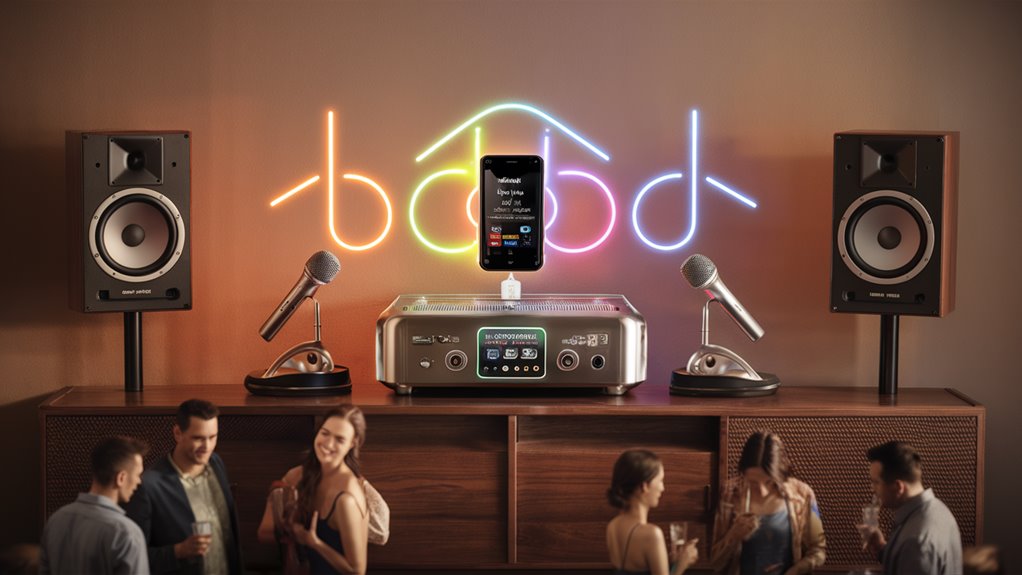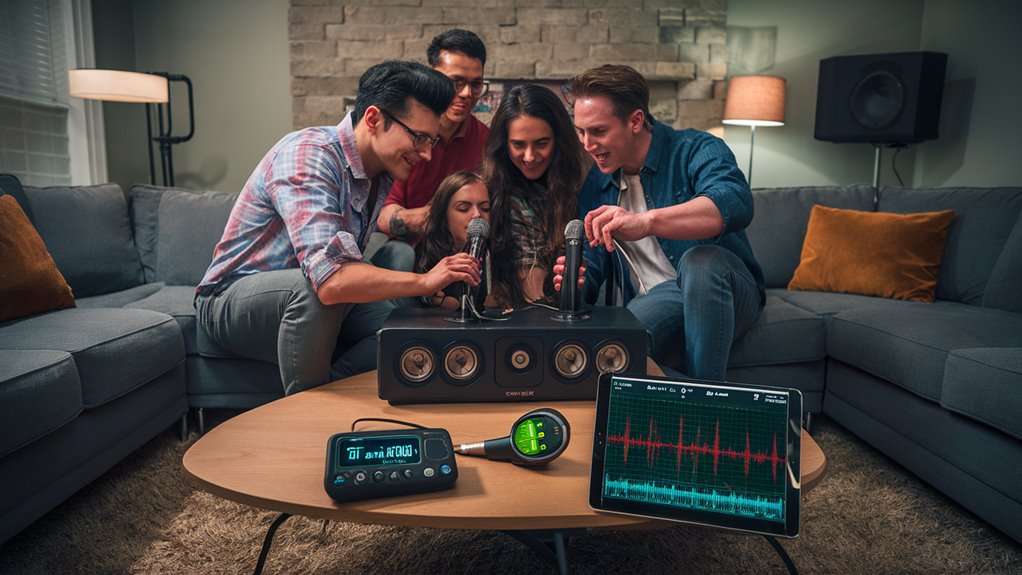
Key Steps to Pick the Best Karaoke System

What to Look for in Karaoke Tech
When picking a karaoke system for your fun party, think about giving each guest 15-20 square feet. This helps know the power you need. Small rooms under 200 square feet work well with a 50-100 watts RMS output. Big places need stronger systems. Good choices have two XLR microphone inputs, a 90dB noise-to-sound rate, and a range from 20Hz to 20kHz for top sound. 호치민 퍼블릭가라오케 예약하기
Think About Money and What You Get
Cheaper Systems ($100-300)
- Supports basic MP3+G
- OK sound (128 kbps least)
- One mic input
- Works at home
Mid-Priced Systems ($300-800)
- Better sound fixes
- More mic inputs
- Built-in effects
- Links to Bluetooth
Top Systems ($800+)
- Best sound parts
- Great mix skills
- Many ways to plug in
- Built really well
Focus on MP3+G, good sound fixes, and strong mic inputs. Wireless mics and phone links are a plus. Make sure the system fits your place size and has lots of songs.
Check Your Party Space
How to Fit Your Party Space for Karaoke
About the Room
The room size and max guests matter for your system setup.
Size up your room’s space and roof height for the best speaker spots and sound spread.
Small areas under 200 square feet need compact systems with 50-100 watts RMS output. Big places want more watts for the best sound.
Sound and Room Stuff
Room sound is key for what system you need.
Hard walls can echo, needing Digital Signal Processing (DSP) in karaoke setups.
Stuff like carpet or soft seats affect the sound, often needing more power to keep the sound right.
How Many People and Gear
Think of max guests as 15-20 square feet per person for room to move.
Plan mics as one for every 15-20 people.
Big gatherings of 50+ guests work well with two-part wireless systems, good for duets and fast song changes.
What Sound Level You Need
Must-Have Sound Levels for Karaoke
Sound System Needs
Sound needs must match your party for the best karaoke fun.
Key sound facts are speaker power, sound range, and sound-to-noise rate.
For inside spaces under 500 square feet, use at least 50W RMS, but bigger spots should have 100W or more for good sound cover.
Sound Range and Mic Quality
Your system’s sound range should be 20Hz-20kHz to catch all sound parts. Mic sound range should be 80Hz-15kHz for clear singing.
Advanced setups with Digital Signal Processing (DSP) and automatic sound cuts stop bad sound during shows.
Needs for Sound and Control
Get top voice with systems having a noise-to-sound rate of 90dB or more. Right part matching between speakers and amps is key for steady work.
For many mics, be sure your system has good mix controls and many mic inputs with their own sound level changes.
Add a graphic equalizer to tune sound for different voice types and room sounds.
Think of Your Money
Know Your Karaoke System Money Choices

Money Levels
Knowing price types and what they give helps you choose smart.
We see three main kinds:
Start Systems ($100-300)
All-in-one karaoke fixes here give:
- Built-in speakers
- Basic mix setup
- Connects to Bluetooth
- USB ways in
- Key sound controls
Medium Systems ($300-800)
These better karaoke setups offer:
- Stronger sound
- Pro mix boards
- Two wireless mics
- Own channel changes
- Nicer sound
Pro Systems ($800+)
Part-based pro systems have:
- Strong amps
- Top sound machines
- Great speakers
- Pro XLR links
- Great mix powers
How to Spend Your Money
Advice for Buying Parts
- Main parts: 50% (amp, mix board)
- Speaker set: 30%
- Mics and other things: 20%
Plan for Upgrades
Start with good main parts, and build from there. This way lets you:
- Slowly make your system better
- Keep parts working together
- Save money long-term
- Grow performance
Main Gear Stuff
Must-Have Karaoke Equipment Parts Guide
Key System Bits
Connecting mics is key in good karaoke systems.
At least two XLR mic inputs with own sound controls and echo sound fixes help voices sound great.
Own channel changes let you fine-tune for many singers.
Sound System Needs
The amp system needs thought, with at least 100W RMS power for home use.
This power makes clean, strong sound at comfy sound levels.
Digital Signal Processing (DSP) should have:
- Key-change tools
- Auto-tune
- Reverb setups
- Voice bettering tools
File Types and Links
Good karaoke systems need to work with many file types:
- MP3 audio
- MP4 video
- CDG files
- Streams over Bluetooth
- USB links
Screen and Use
Screen quality changes how it feels to use it. Needed parts include:
- At least 7-inch screen
- Clear word show
- Easy menu use
- Real-time voice effect checks
How to Grow the System
Systems planned for the future have:
- Out spots for extra speakers
- Video out for big screens
- Can update the system
- Out store help
Links and Device Work
Key Link Needs in Modern Karaoke
Must-Have Links
Today’s karaoke needs easy mix with many devices.
Top setups have lots of link ways like Bluetooth, Wi-Fi, HDMI, and USB.
These let you stream right from phones, tabs, and computers while keeping top sound and video.
Sound and Show Work
Strong sound and sight help is key in new karaoke sets.
Best systems can handle many sound types like MP3, WAV, and CDG.
For flexible shows, find options with various video outs like HDMI, RCA, and VGA.
Two mic inputs with own sound changes boost singing for groups.
Wire-Free Tech and App Use
Top wire-free work marks the best systems in 2024.
Main parts include app links and streaming from big sites like YouTube Karaoke, KaraFun, and Singa.
Updates in firmware keep your gear current, while built-in sound codes like aptX bring top Bluetooth streaming.
The best setups keep working smooth with new software and code fixes.
Song Store Picks
Top Guide for Karaoke Song Stores
Main Formats
A pro system leans on smart song store plans and lots of source options.
CD and Web Fixes
CD+G (CD plus Graphics) gives top sound with words that sync.
Building a CD store is key for places without good net. Karaoke Room Acoustics: Why Sound Quality Matters
Web spots like Karafun and SingKing offer wide song lists with new tunes often, across many styles and years.
Smart Song Handling
Pro systems should have built-in song lists with at least 10,000 legal songs, updated all the time.
Sound making quality must be at least 128 kbps for great sound. New streaming needs to work with big karaoke apps, supporting both MP3+G and ZIP files.
Joining local and web stores gives you lots of ways to use it.
Check all license needs, as many spots need you to keep paying to use their song lists.


